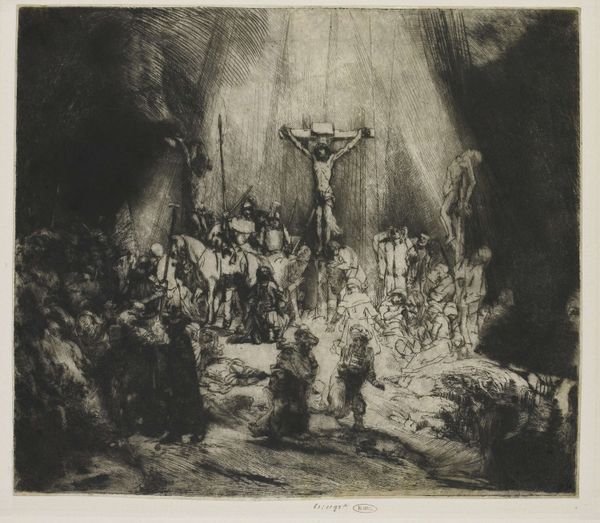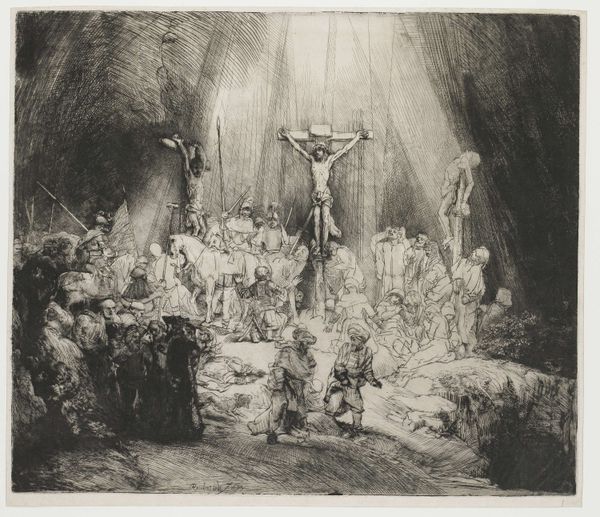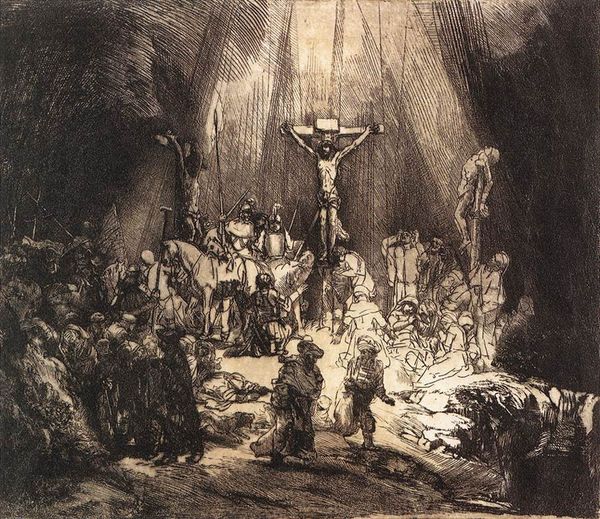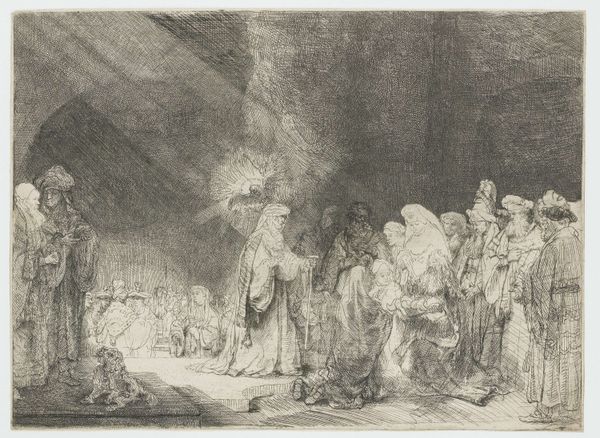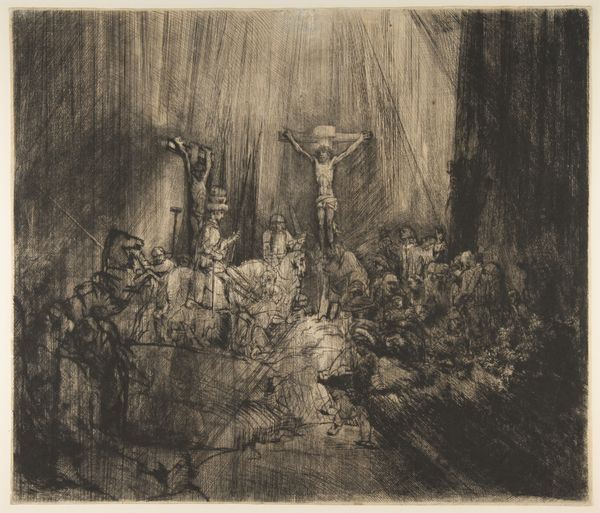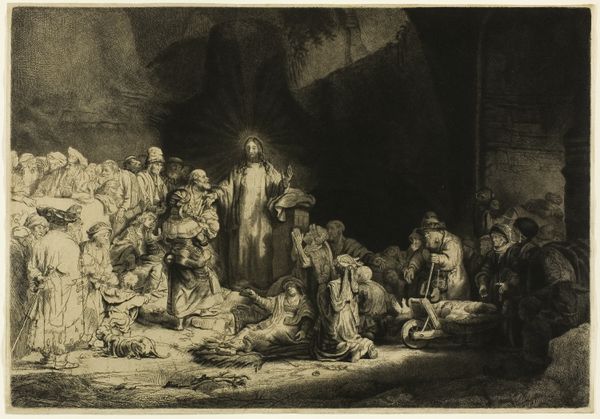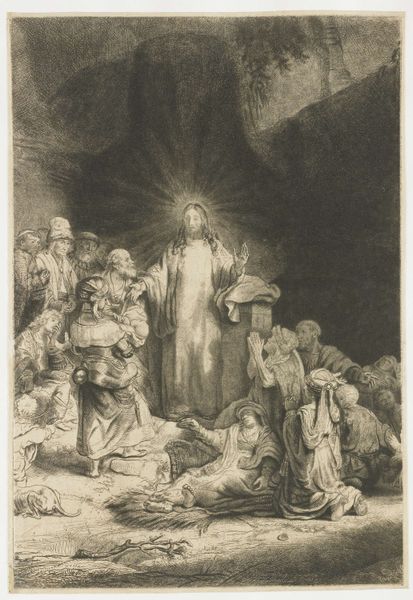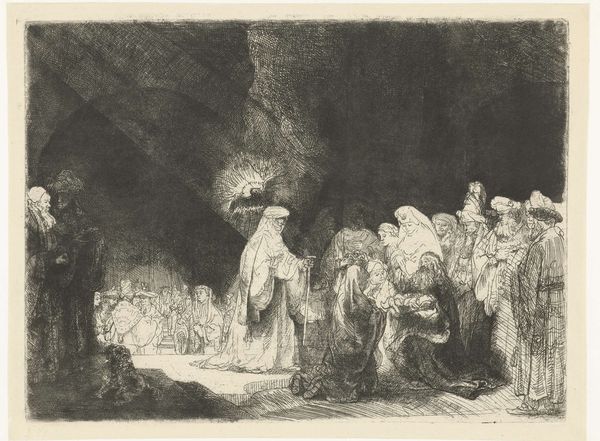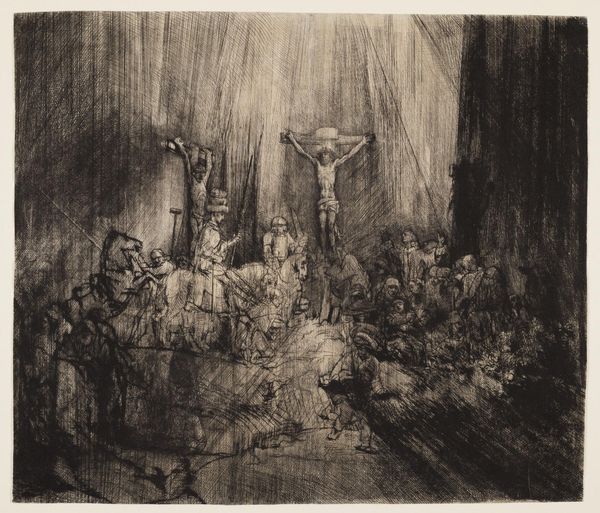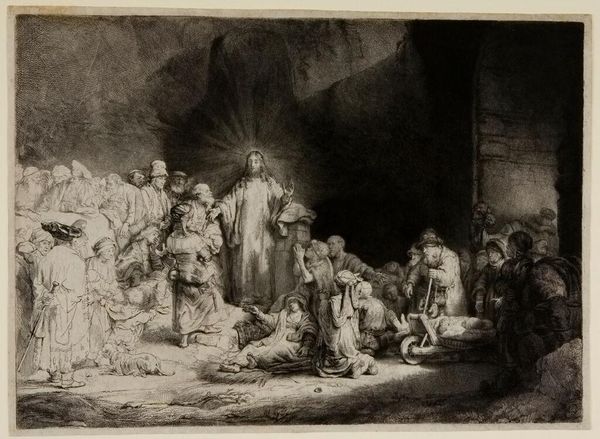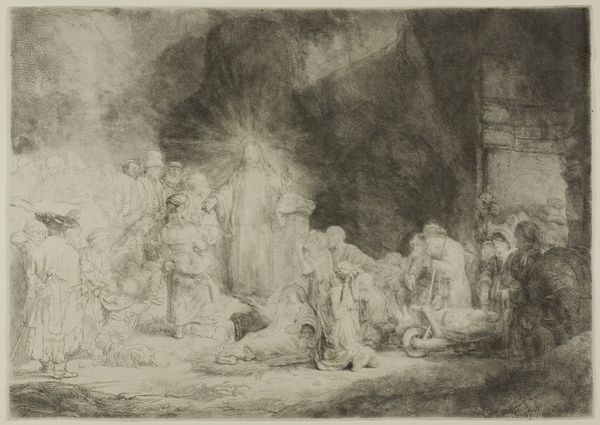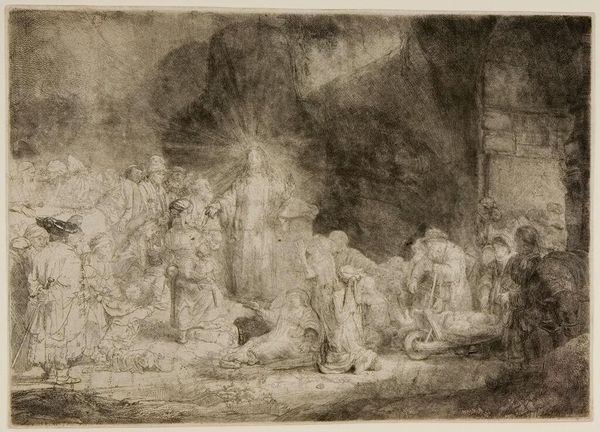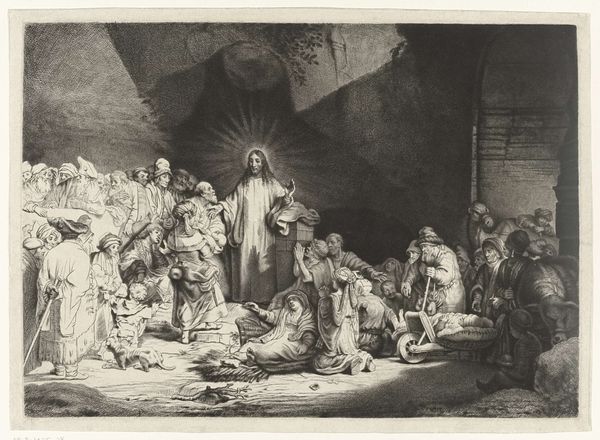
print, etching
#
baroque
# print
#
etching
#
landscape
#
figuration
#
history-painting
Dimensions: height 386 mm, width 452 mm
Copyright: Rijks Museum: Open Domain
Curator: Good morning. Let's consider Rembrandt van Rijn’s etching "The Three Crosses," created in 1653. It resides here in the Rijksmuseum. Editor: Striking, isn't it? At first glance, it's a storm of dark and light. So dramatic, so theatrical… feels like peering into the heart of grief itself. Curator: Exactly. And that darkness is no accident. The richness and texture comes from Rembrandt’s masterful use of drypoint, which allowed for deep burrs of ink to cling to the plate, creating intense blacks when printed. Think of the labor involved! Repeated passes, pushing that burin across the copper. Editor: Makes you think about the cost, the physicality, the sheer grit of the process mirroring the subject matter, maybe? Did he even consider that he's also depicting Roman power and technology? Curator: A worthwhile perspective. Here we have this incredibly powerful and emotional image wrought through industrial means, if you like. But note how Rembrandt uses these contrasts. The intense dark overwhelms the scene and spotlights moments of grace—like those stark beams illuminating the central cross, transforming the divine into something touchable. Editor: Yes! The inking almost feels sculpted, each pull of the etching press an attempt to tease form from the abyss. Consider how many proofs he must have run, how many imperfect versions… the waste alone. Curator: Rembrandt certainly experimented freely. Now consider this image as a moment of dramatic reckoning. The figures at the base range from despair to indifference, and there are soldiers milling about, on horseback and foot. Even in the darkest shades, details like their costumes, the crowd’s anguish… each contributes. Editor: It seems counterintuitive – an etching that has this density to it. The lines start working against legibility but maybe that’s his way of conveying chaos… the collapse of meaning. Curator: Or perhaps the creation of new meaning. Seeing, suffering, believing... the process seems central, mirroring the act of faith itself – etched in grief, printed in hope. Editor: Perhaps we are both right. Thank you, that's made me look at it completely anew. Curator: Likewise! These conversations can really unlock a piece.
Comments
rijksmuseum about 2 years ago
⋮
Christ hangs on the cross between two thieves, surrounded by apostles, his mother, disciples, and soldiers. Rembrandt executed the scene entirely in drypoint, which had (almost) never before been done. This technique involves scratching directly in a copper plate with an etching needle, which lends the lines a burred, velvety quality. This enormous print is, moreover, printed with light surface tone.
Join the conversation
Join millions of artists and users on Artera today and experience the ultimate creative platform.
